Green Wall with bikes at the Universidad del Claustro de Sor Juana, Mexico City. Image via Wikipedia
Vertical gardening is currently very trendy in landscape architecture and interior design. With trendiness, sometimes comes stagnation in design. Perhaps due to a lack of codes and guidelines in many cities, vertical gardening remains a flexible umbrella term for a variety of designs. This post will explore some of the world’s more innovative vertical garden designs. The following projects show the concept of vertical gardening pushed to the extreme in terms of engineering, materiality and concept. Often design offices are competing for the ‘biggest,’ ‘best,’ and ‘most diverse’ projects, but this list is here to show you that sometimes it is more fun to break out of the proverbial ‘box’ or ‘planter,’ if you will…
 Bosco Verticale in Milan, designed by Stefano Boeri Architetti. Image via Wikipedia
Bosco Verticale in Milan, designed by Stefano Boeri Architetti. Image via Wikipedia
1. Bosco Verticale
First honourable mention goes to the Bosco Verticale, which has gained a lot of media attention in the last couple of years. A project by Boeri Studio, the concept of the residential towers is to build a vertical forest in the city of Milan. Currently under construction, this project will host a whopping 900 trees, various shrubs and floral plants at elevations up to 110 meters in height. On flat land, the Bosco towers would equal 10,000m2 of forest, and 50,000m2 of single family dwellings. Though the concept of growing trees on buildings is nothing new (see Friedensreich Hundertwasser’s tree tenants) I think this project is worth mentioning because of the sheer volume of trees it will host.
 Image via the European Environment Agency Flickr Account
Image via the European Environment Agency Flickr Account
2. European Environmental Agency
In 2010, the EEA (European Environment Agency) office in Copenhagen decorated the front of their building with a map of Europe in celebration of the United Nations International Year of Biodiversity. The map shows the ecozones of Europe, and was planted using different annual plant to differentiate the zones by their colour. Though this project was only on display for one summer, it remains an integral project to this list. It demonstrates how vertical gardens can be used as educational tools, as well as tools to enhance the biodiversity and beauty of a city.
 EarthBank Project by Matt Brook and Walter Cicack. Image via Horticultural Building Systems
EarthBank Project by Matt Brook and Walter Cicack. Image via Horticultural Building Systems
3. Horticultural Building Systems
Another innovative, but less known vertical garden project was created at the University of Oregon by students Matt Brook and Walter Cicack. The project was completed during a design build studio called Horticultural Building Systems, lead by professor Richard Hindle in 2010. The wall is made from a single 3” slab of a custom mix of concrete and growing material. The mix was refined during the studio to be light weight enough to affix to the side of a shipping container, and strong enough that it could hold itself together. The wall was designed to accommodate a couple of grown varieties of sedum, as well as a grass and wildflower seed mix meant to fill out the wall over time. This project is a very interesting leap from the somewhat more traditional notion of a “planter brick,” wherein a modular concrete brick contains an open area for the growing medium and plant inside of it. This system combines the two traditional materials (concrete and soil) into one new hybrid growing medium. It is unknown whether the plants have survived over the years, or whether the seeds were able to successfully germinate.
 The Sportzplaza Mercator in Amsterdam by Venhoeven CS Architecture+Urbanism. © Luuk Kramer
The Sportzplaza Mercator in Amsterdam by Venhoeven CS Architecture+Urbanism. © Luuk Kramer
4. The Sportzplaza Mercator
The Sportzplaza Mercator in Amsterdam is one of the more impressive vertical gardens I’ve seen. The building is a community centre with a variety of pools for therapy, fitness, aerobics, together with a cafe, party centre, childcare centre and fast food restaurant. During community consultation, VenhoevenCS and OKRA were told by the community that they wanted the building to be “as green as possible” so the architects took that idea literally: the building itself is an undulating landscape of green roofs and walls, with plantings only interrupted by windows and doors. Every available surface appears to be planted. It is purely magnificent to behold.
 BIQ Residence IBA Hamburg. Photo by Gunnar Ries on Flickr
BIQ Residence IBA Hamburg. Photo by Gunnar Ries on Flickr
5. BIQ Residence
Vertical gardens, although generally quite unsustainable and expensive, can be used to generate energy. One such project is the BIQ Residence. This facade, instead of growing traditional plants, grows algae. Panels of water are suspended on the outside of the building, promoting the growth of algae, which not only turns the outside of the building green, but also serves to heat the building, and to control light and shade within the building. The 200 sq.m of algae grown on 2 of the facades yield 15g of dried algae per sq. meter which in turn produces 4,500 kW/h per year when converted into biogas.
 The Planter Brick by Rael San Fratello Architects
The Planter Brick by Rael San Fratello Architects
6. The Planter Brick
In today’s age of technological advancement, the Planter Brick project by Rael San Fratello Architects shows how the technology of 3D printing may be used for vertical gardening. They have designed and printed ceramic masonry bricks with openings for soil and plants. This conceptual project is a great demonstration of how traditional building methods can be adapted to accommodate a garden.
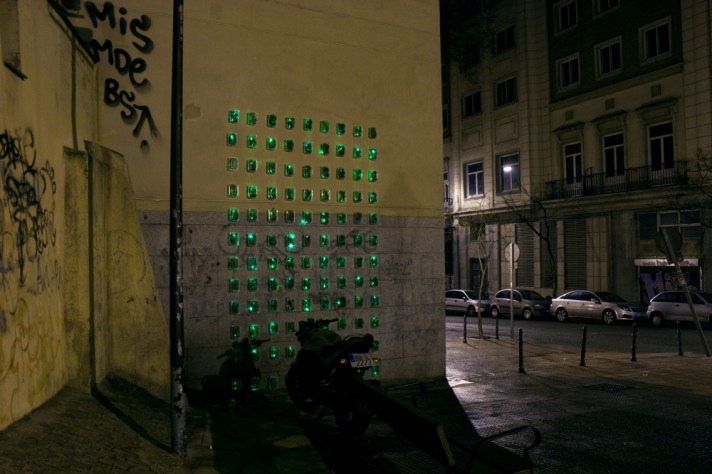 Packaged Vertical Garden by Luzinterruptus. Image © Gustavo Sanabria
Packaged Vertical Garden by Luzinterruptus. Image © Gustavo Sanabria
7. Packaged Vertical Garden by Luzinterruptus
Vertical gardens can be political statements as well, and in my opinion, this list wouldn’t be complete without one. A favourite of mine is the Luzinterruptus Packaged Vertical Garden, in Madrid. The concept of the garden is to bring attention to the lack of greenspace in cities, and critique vertical garden culture. Luzinterruptus believes what people really need is accessible greenspace, not green space on the side of a building no one has physical access to. Their garden is made of plastic containers to highlight the temporary nature of vertical gardening.
Keep tuned for the next post in our Vertical Gardening Series, that will be all about my personal favourite vertical garden designers!
Written by Tamara Urben-Imbeault, M.L.Arch. student at the University of Manitoba, Winnipeg, Manitoba, Canada. She is currently working on her design thesis entitled “Vertical Gardening in Cold Weather Climates”
Contact: umurbeni[at]myumanitoba.ca or t.urbendesign[at]gmail.com
Sources:
Arch Daily (2013). Sportplaza Mercator/ VenhoevenCS. Retrieved from http://www.archdaily.com/341219/sportplaza-mercator-venhoevencs/
Boeri Architetti (2009). Il Bosque Verticale. Retrieved from http://stefanoberiarchitetti.net/en/news/il-bosco-verticale/
European Environment Agency (N.D.). Europe in Bloom: A Living Facade at the European Environment Agency. Retrieved from http://eea.europe.eu/themes/biodiversity/living-facade
Hindle, Richard L. (2010). The Earth Bank: A Living Building System by Matt Brooke and Walter Cicack. Horitcultural Building Systems. Retrieved from http://horticulturalbuildingsystems.blogspot.ca/2010/08/earth-bank-living-building-system-by.html
KOS Wulff Immobilien GmbH (2012). Mikroalgen: Clevere Energiebündel. Retrieved from http://www.biq-wilhelmsburg.de/die-fassade/biologie.html)
Luzinterruptus (2010). Jardín para un futuro, no muy lejano / Garden for a not too distant future. Retrieved from http://www.luzinterruptus.com/?p=67
Rael San Fratello (2014). The Planter Brick Retrieved from http://www.rael-sanfratello.com/?p=60
Published in Blog


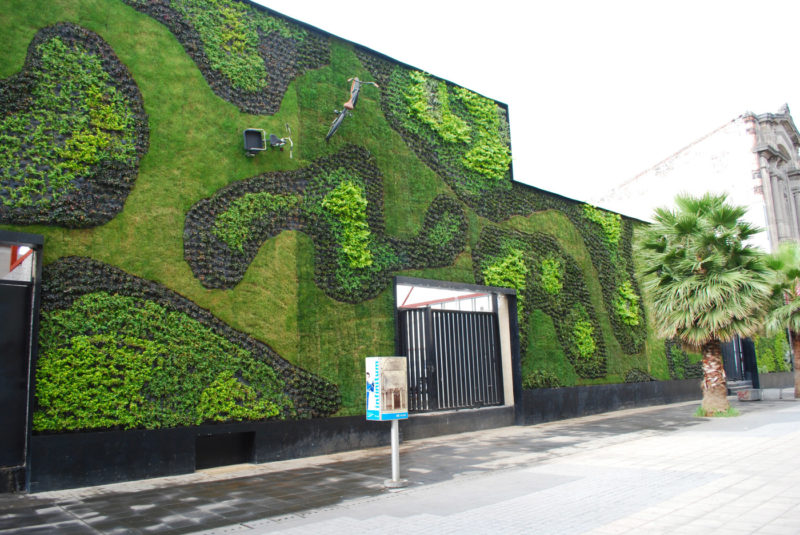
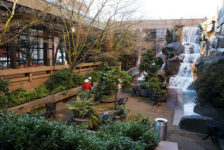

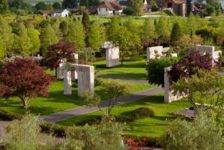
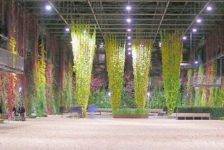
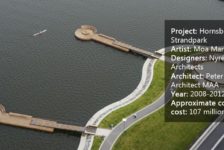
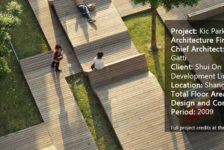

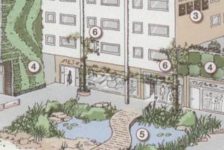
Goustan BODIN
Sorry, but having shrubs and small trees in planters do *not* make a vertical forest. I was really disappointed when I saw all the marketing buzz around that bosco verticale last year.
Now I’m very surpised to see you write : “On flat land, the Bosco towers would equal 10,000m2 of forest”. Sorry, but once again, how can you call plants in planters a forest ! If you put them on flat land, you will get 10,000m2 of concrete planters !!!
I do *not* believe we landscape architects need to repeat all the crap architects use to surf on the green trend and sell more concrete. Leave them the green-washing, let’s focus on our job and do the actual greening ourselves.